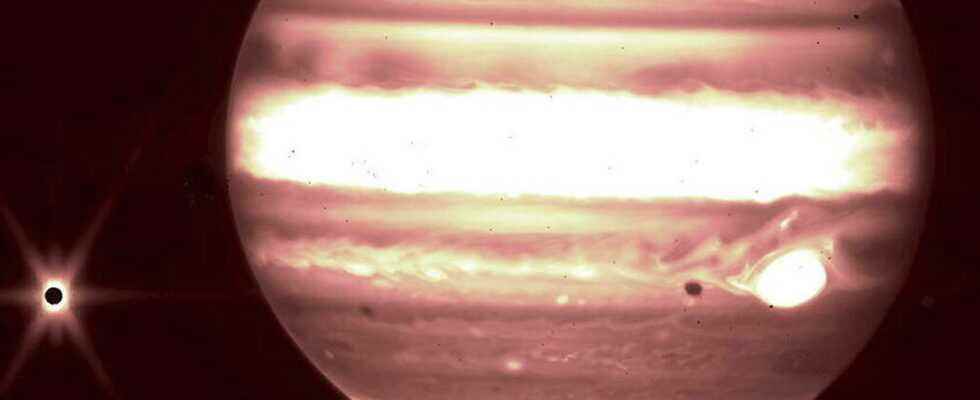Sf discovering the first galaxies that formed in our Universe is one of the main objectives of the James-Webb space telescope, the new observatory definitely has many other talents. As proof, in the wake of the publication of its very first scientific images, NASA also delivered the 40 terabytes of data (1 TB = 1 million megabytes), collected during the telescope test phases, so that the scientific community can grab it. Among them is an iconic image that is likely to speak to everyone, since it is the first snapshot of a planet in the solar system according to James-Webb. A rather unusual view of the gas giant Jupiter in infrared, the region of light waves inaccessible to the human eye, which the space telescope observes.
Extremely fine details can be seen in it. In particular in the clouds which evolve in the alternating circulation bands (east-west, west-east) characteristic of Jupiter’s atmosphere. We can also see the gigantic anticyclone which constitutes in a way its “trademark”: the great red spot, surprisingly stable since it has been visible in its southern hemisphere since it is given to men to observe the planet with a telescope. It appears here very bright, because, on this shot, the brightest areas are also the warmest. However, this anticyclone, whose diameter is larger than that of the Earth, brings to the surface very hot gases coming from the interior of the giant planet.
A picture of Europe
As for the small body on the left of Jupiter in the image, whose shadow is also visible on the left of the great red spot, it is undoubtedly the most famous of its seventy-nine known natural satellites of the gas giant. Its moon Europe famous for its mysterious geysers probably signaling the presence of an ocean under its ice crust. An expanse of salty liquid water all the more likely to harbor life as it would be in contact with the rocky mantle of the moon allowing the occurrence of chemical reactions between the two. The quality of the image is promising and indicates that the James-Webb telescope not only allows us to see far into the infancy of the Universe, but will also be able to make new discoveries about our near space neighborhood, in the “here and now “.
READ ALSOJames-Webb: clichés explained by astrophysicists
Science and tech newsletter
Great interviews, major discoveries, innovations and behind the scenes… Every Saturday, dive into science and tech news.
The editorial staff advises you
